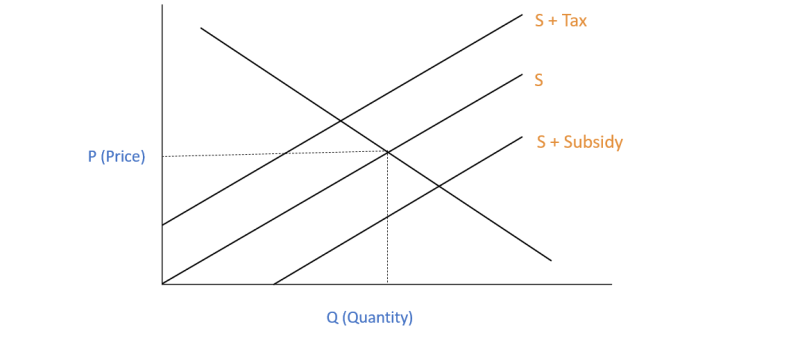Equilibrium
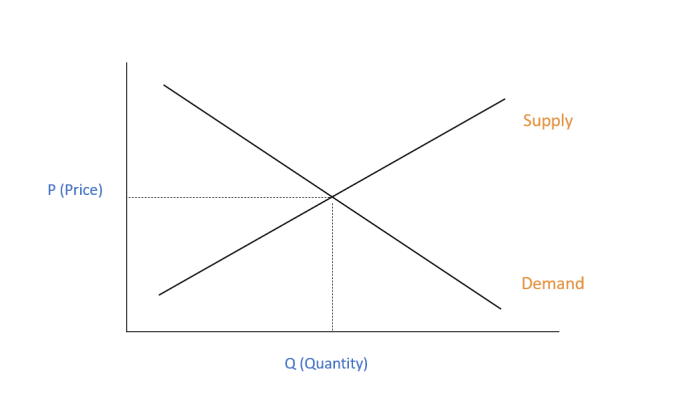
Demand | The quantity that a consumer will purchase for a given price |
Supply | The quantity of goods/services that a supplier is willing and able to supply at each price point (for price-takers) |
Equilibrium | Where supply and demand curves intersect is the equilibrium market price and quantity. |
Non-equilibrium
When the market is not in equilibrium, a shortage or surplus of quantity results at any given price.
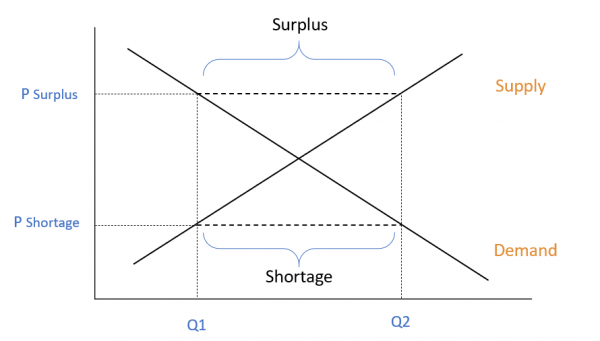
Surplus | At a price that is higher than equilibrium price, the quantity that suppliers are willing to supply is greater |
Shortage | At a price that is lower than equilibrium, the quantity that consumers are willing to purchase is greater |
Shifts of the Supply and Demand Curves
Usually, price and quantity changes happen along the supply and demand curves.
When there is a shock from external factors, the whole supply or demand curve can shift itself (i.e. the quantity demanded or supplied at a given price changes).
Supply Shock
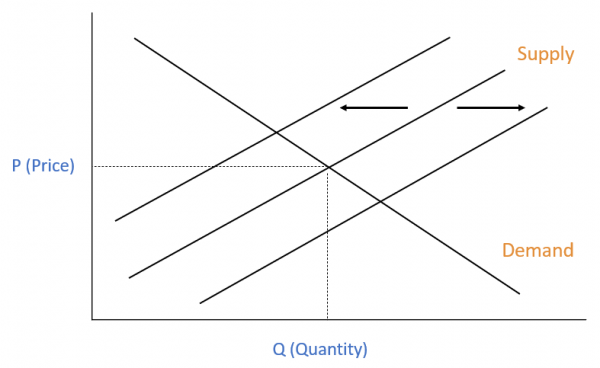
Supply curve shifts due to | •Cost of inputs •Technology •Government Regulations |
Demand Shock
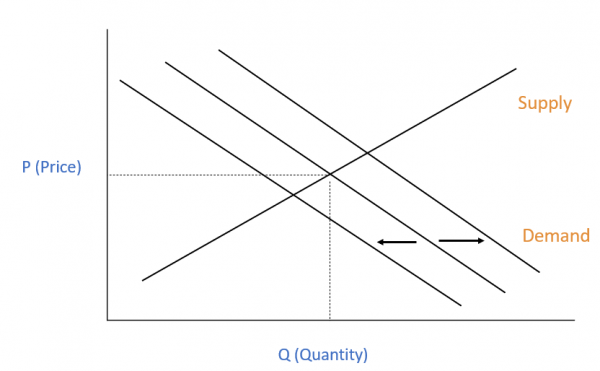
Demand curve shifts due to | Demand curve shifts due to:
|
Elasticity
Economic elasticity refers to the degree of change in quantity for a given change in price.
More elastic goods experience more change in demand for a given change in price.
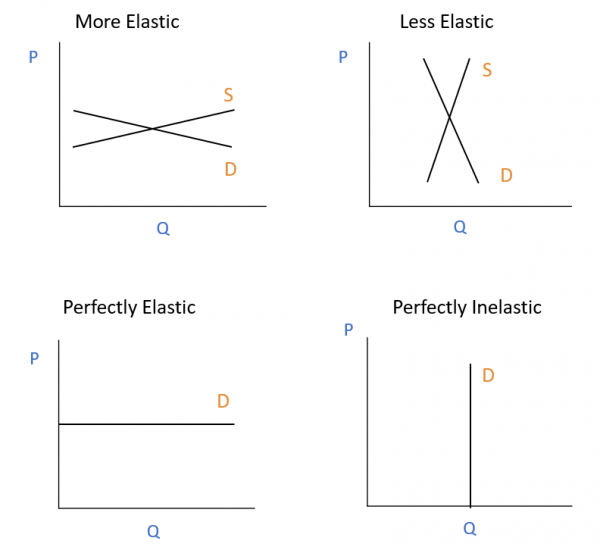
•More Elastic Goods: •E.g. soft drinks, clothing | Less Elastic Goods •If the price goes up by 1%, demand changes by <1% as consumers don’t have much of a choice •E.g. transport costs, utilities, medicines |
Perfectly Elastic Goods •If prices increase, consumers stop spending on these goods, often luxury goods •E.g. holidays such as cruises | Perfectly Inelastic Goods •Regardless of the change in price, there will always be demand •E.g. necessities with no close substitutes such as life-saving medicines |
Taxes and Subsidies
Taxes and subsidies on producers cause shifts in the supply curve.
A tax results in a greater price for a given quantity.
A subsidy results in a lower price for a given quantity.
